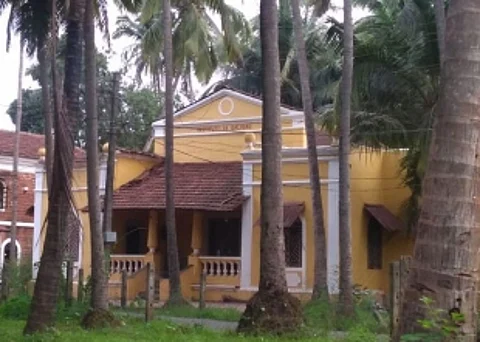

The village of Saligao has a unique nine-decade old institution,
Saligao Institute,
which is celebrating its 90th anniversary today. The institute was inaugurated
on the feast day of St Cajetan in 1929. Believed to be one of the oldest
institutions of its kind in the state, which is still active to this day,
Saligao Institute is not just entertaining but also educating the third
generation of the village.
‘90 years Young – 1929-2019 The Saligao Institute’ will be held
today, August 11, 2019, from 6pm onwards with music by Muzik Ikonz and prize
distribution, games, dancing, quiz in the evening, followed by dinner.
Architect Dean D’Cruz was elected the president in June, taking
over from ex-president Glen Dantas. “The institute has music, dance, games and
catching up with your neighbours, sometimes with food. Through the new
committee, we are looking at bringing together all communities and new settlers
in the village. One of the earliest festivals, the May Festival brought a lot
of attention to the institute. Unfortunately, it has lived its purpose of that
time. Now the dances are more commercial. We still have indoor games like
Bridge, carom and pool. Our present activities mainly involve our middle-aged
members but we hope to get the young and elderly also involved in the programs
soon,” says Dean, about the institute that has 500 life members.
Mario Cordeiro, Vice President of the institute, reminisces
about the early days of the institute. “The Saligao Institute has been very
instrumental in uniting the villagers of Saligao for these 90 years. From the
early part of the century till the late 1990s, a lot of work was done. But from
then, a lot of the active members migrated or went away for work or other reasons,
which reduced the activities at the institute to a point where there were no
activities for months. The new committee has come in to revive it back to what
it used to be.
“One of the first dances in Goa, the Liberation Eve Dance on
December 18 used to be held at the institute. The original Foxes Night, which
was then called the May Feast Dance, the Saligao church feast was held on the
first Sunday of May at the institute. Later, one of our members, late Dr
Wilfred D’Souza, requested for the dance to be held by the Saligao Sporting
Club, where he was a benefactor,” says Mario.
The Saligao Institute is open to the villagers of Saligao.
However, they have to become life members. If any person is already a member,
their children up to the age of 18 years are dependent and they have access to
the place whenever they require. Besides the indoor games and the weekly housie
or tamboola, the badminton court will be redone soon after the monsoons. The
institute used to house a full-fledged library that is no longer in use. But
the committee is being optimistic about encouraging the reading habit of the
young members by adapting to technological changes. “We were thinking on having
tabs and Kindles available with wi-fi, which may be a viable option for young
readers to come to the club,” says Mario.
Journalist and founder of the publishing house Goa 1556,
Frederick Noronha is the second generation that is tied up with the institute.
“It is probably the oldest institution of its kind, and still active in Goa. It
is older than institutes in Moira, Aldona, Calangute and other villages. My
understanding is that the idea came from the British East Africa clubhouse,
where expat Goans spent the evenings socialising, playing sport and reading. In
fact, the Saligao Institute was itself set up largely with the support of
Africanders (Goans earlier based in Africa). In the 1960s, the returning Goans
(from Africa, other parts of India, etc) revived the ‘club’, as we call it,”
says Frederick, who is also the general secretary of the committee.
He adds, “My father’s generation took a lot of interest, and had
regular activities there. People of my generation have very happy memories
growing up there, as it was almost a second home. I owe a lot of my reading to
the Saligao Institute, while those who were interested in sports or social
activities, music and dances also had a lot of things happening for them. The
return of the East Africa Goans, due to Idi Amin and Africanisation in Kenya,
Tanzania, etc, also had a huge positive impact, rebuilding the social life and
activity of the village then. Later, after the 1980s-1990s, there was another
spurt in out-migration from Goa; many of the children of the East Africanders
themselves left to migrate to Canada, Australia, US, etc. The Saligao Institute
saw a lull in its activities, and was not very active then.”
The institute is making a huge comeback with a series of talks
and programs. “We launched the Saligao Talks series, in which a school teacher
from the village, Donald Sequeira, now based in North Carolina, USA, compared
his experiences with teaching math in Goa and in the US. We also had two Bridge
learning sessions by Gerard Delaney. We are also planning musical events, and
the series of talks will continue. We are all making a serious attempt to
reactivate the 90-year-old institute and think we have a fair chance of doing
so,” says Frederick.
While the world is getting connected on social media, Saligao is making an effort through Saligao Institute to help the villagers connect socially in person and share a genuine smile instead of a quick emoji.